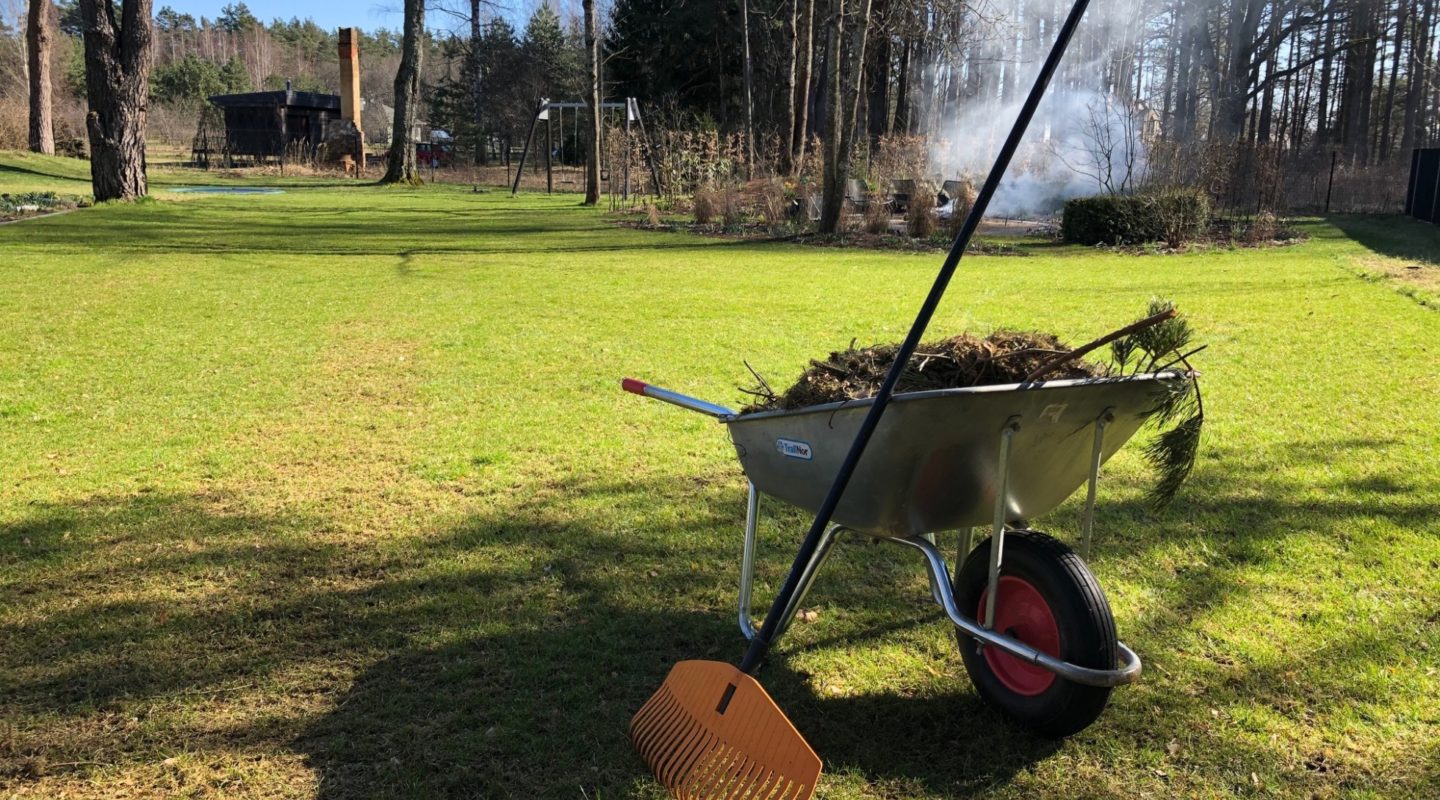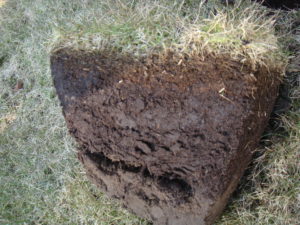
Raking your lawn.
Keep your lawn tidy.
Leaving excessive organic matter on your lawn is one of the major causes of thick ‘thatch’ accumulation. Proper management practises, therefore, promote healthier lawn, provides good air flow and overall cleanliness of your lawn.

Thatch is tightly intermingled layer of living and dead steams, leaves, roots which accumulates between the layer of actively growing grass and the soil underneath
This layer is not able to decompose completely. An excessive thatch layer can restrict the movement of air and water, 1cm of this layer can absorb almost 10l of water per m2! Thick layer (more then 1cm) of thatch can limit movement of air, nutrients, water, or other materials to the roots, all of which are necessary for a strong and healthy grass development. Since thatch greatly restricts absorbency of all the necessary components, root development is compromised and therefore your lawn is struggling. The top layer of your lawn always stays wet after the rainfall, so it can harbour weeds and fungi that cause turf diseases.
Raking your lawn is one of the simplest and easiest ways of removing excess amounts of organic matter and keeping your lawn tidy. Rake the grass with a spring-tined rake, taking care not to tear it. Rake the dead grass and any broad leaf weeds, it is important not to remove all the grass, but just break up the top layer. You can lightly rake the lawn once a month, it will do no harm.
The best time to rake the lawn is early Spring and at the end of growing season.
In early Spring, once you can walk on your lawn without leaving large indentations, rake your lawn. This way, you can remove any mould and old or dead clumps of grass, prevent development of any fungal disease. There is no harm to repeat the process if it happens that Spring season is very long. It is also important to rake the lawn before Winter, removing excess amounts of organic matter.
If you do not wish to use garden rake, there are different types of scarifies available on the market. Just like a lawn rake, the purpose of a scarifier is to remove any dead and matted grass, other debris, such as fallen leaves, cuttings, moss. Scarifier combs the lawn without damaging it.
Thatch that has accumulated to an excessive level can be removed by mechanical means, with a dethatching machine, known as vertical mowers or Verticutters. Although raking is much simpler and less invasive process.


